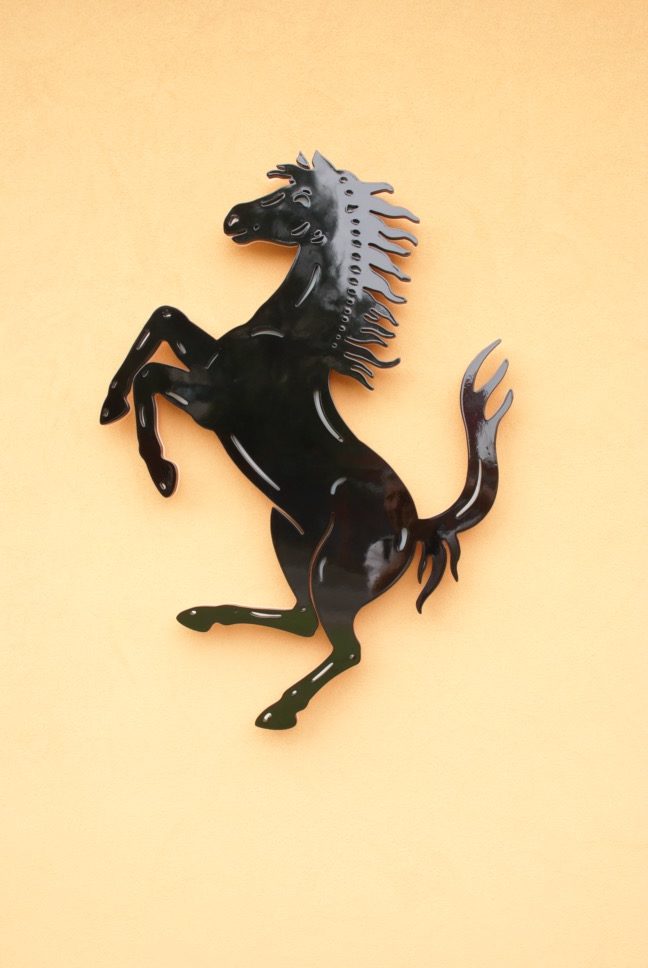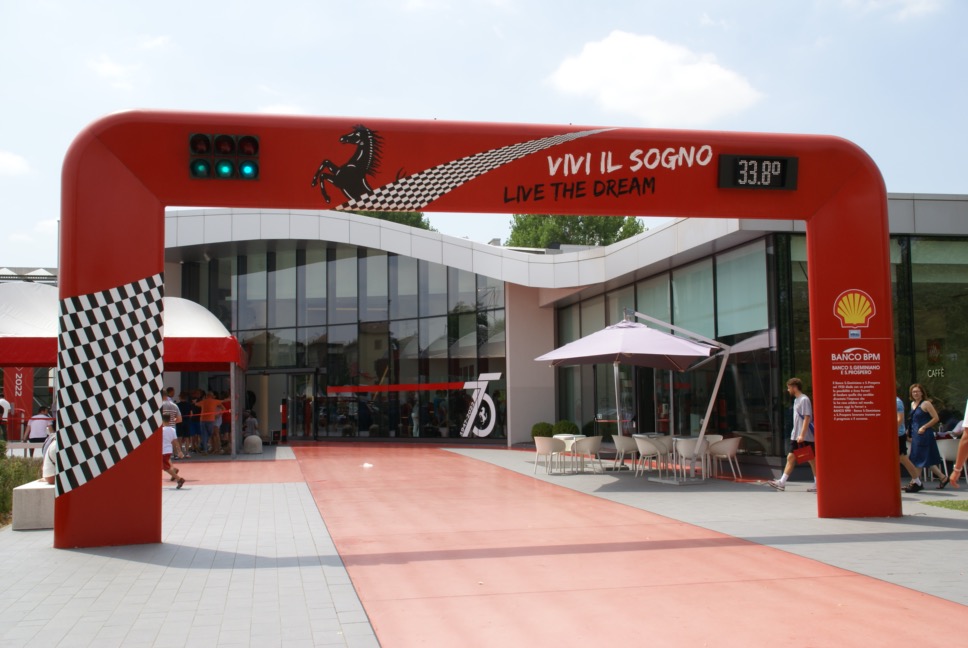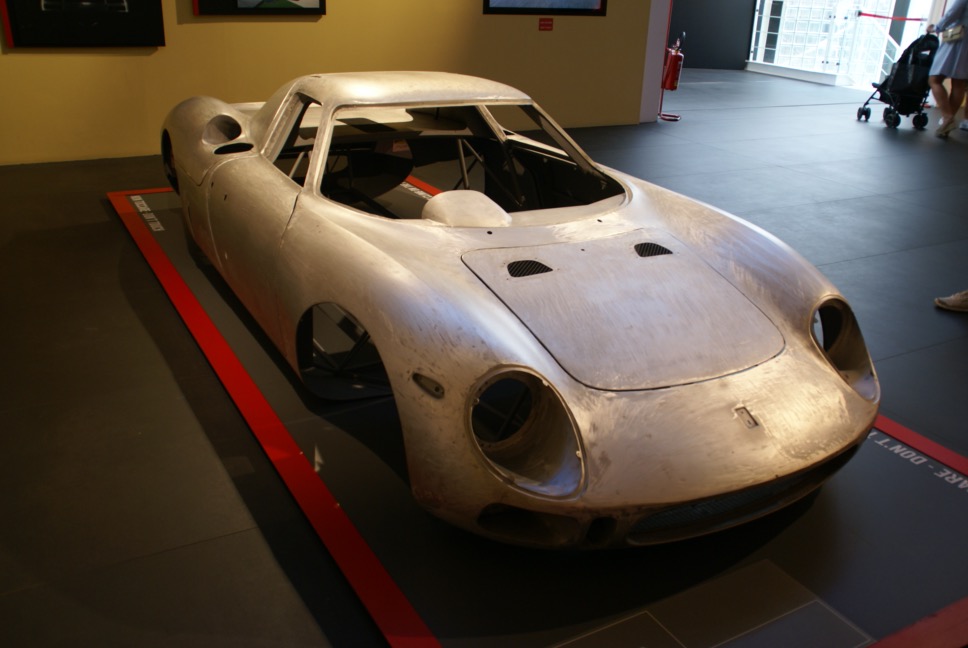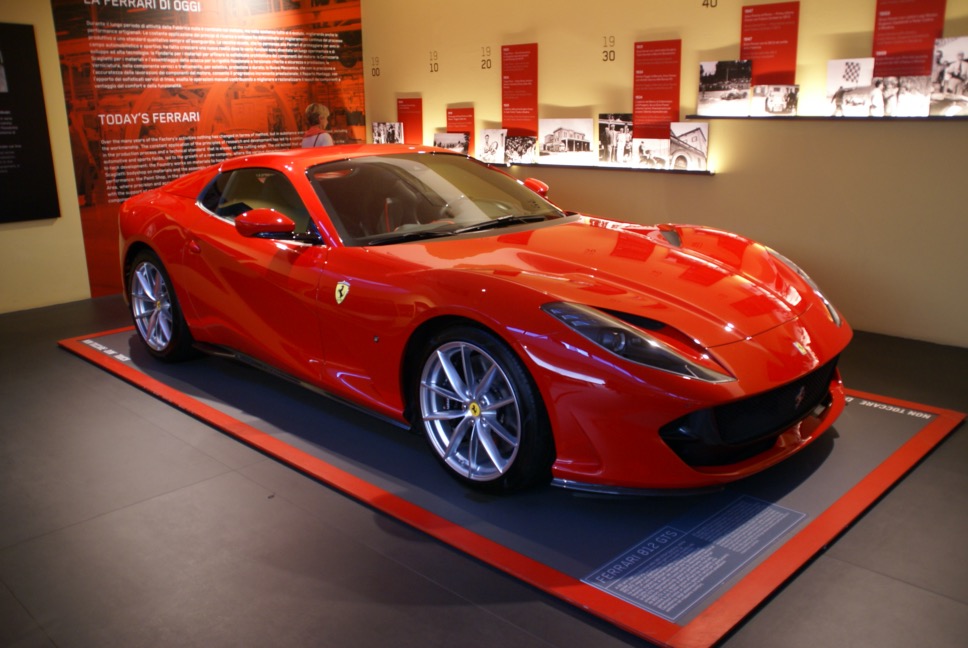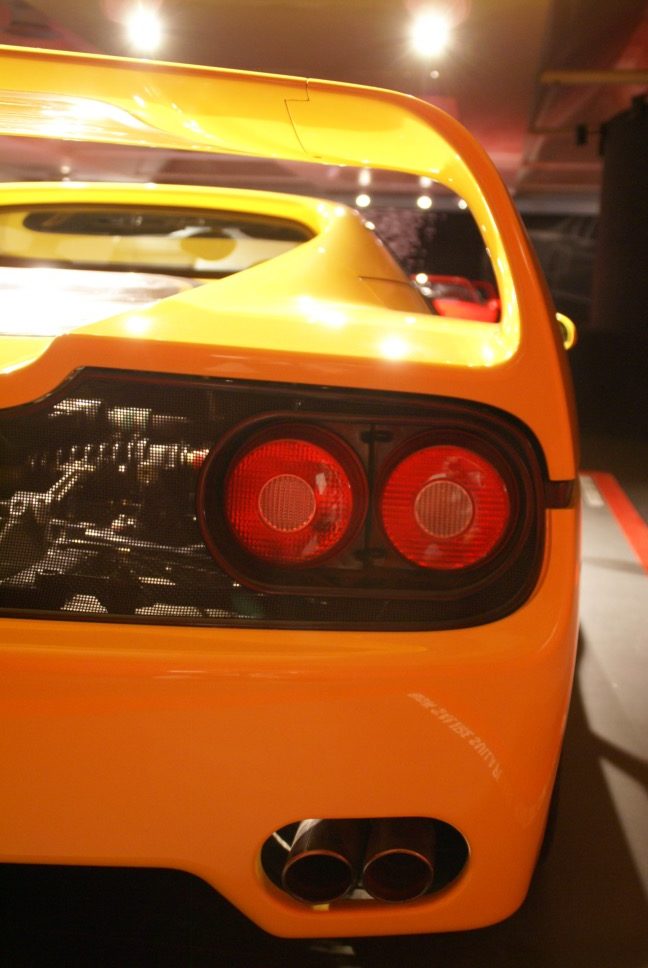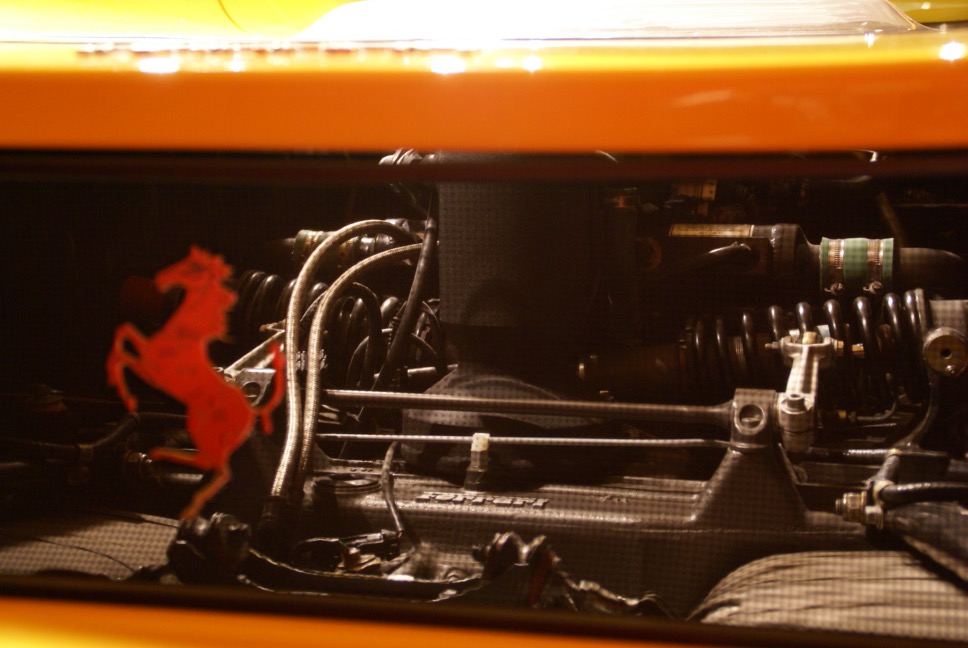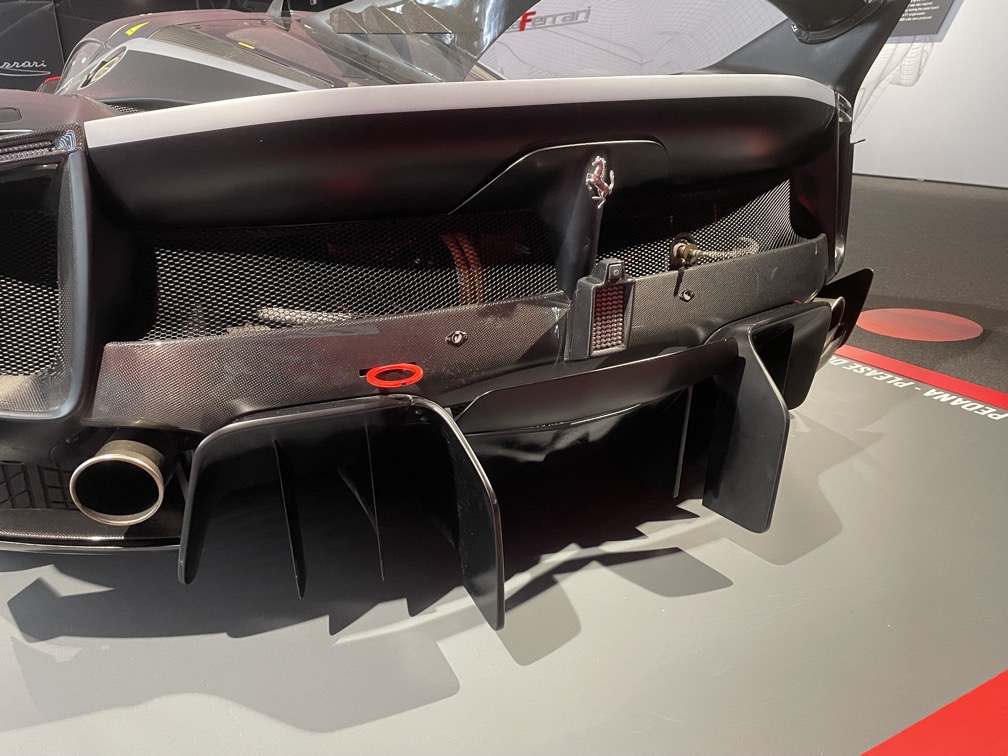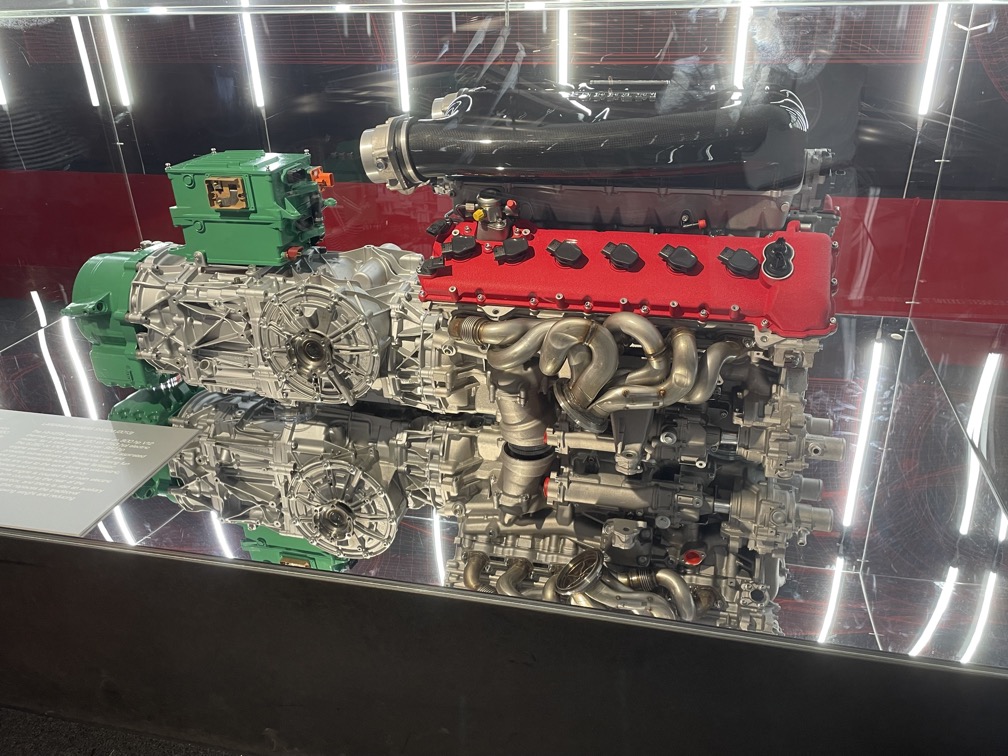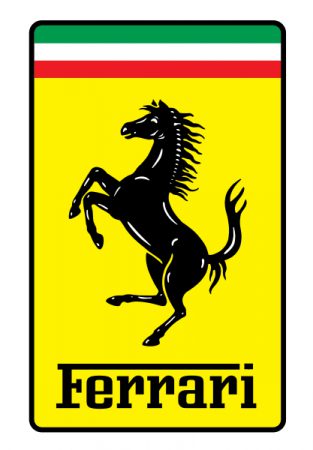
There are 2 Ferrari museums, a few kilometers apart: the Enzo Ferrari Museum located in Modena, the birthplace of the Commendatore, and the Ferrari Maranello Museum, located very close to the Ferrari factory. It is also possible to buy a pass combining the 2 museums (see section Rates and practical tips). Open to the public since 1990, the Ferrari Museum in Maranello is dedicated to the Scuderia, racing and exceptional models (supercars, one-offs, etc.). The Enzo Ferrari Museum retraces the story of Enzo Ferrari, driver, team leader and founder of the eponymous firm. It also tells the story of the brand (small) production models.




Cars from the Ferrari Museum
The Ferrari Maranello Museum therefore presents on the one hand the models of small series, and on the other hand a section dedicated to the competition. There is in particular the lineage of “Supercars”, from the 288 GTO to the LaFerrari through the F40 and F50 which constitute the top of the category of grand touring cars at Ferrari. Each has marked a technological milestone, and being able to admire closely the entire line-up, turn around, examine the details is a rare opportunity to seize. Some of the engines that propel these thoroughbreds are presented next to the cars. The opportunity to see again in “real” the hybrid group of the LaFerrari presented in blocks at the Enzo Ferrari Museum.






A space then presents the almost infinite possibilities of customization of the production models. Personalization goes as far as creating unique models for wealthy and passionate clients, based on an existing platform.




On the ground floor, it’s time to race! We start with the Victories Room, a space dedicated to recent F1 cars who have been victorious, and for several, F1 world champions. The presentation is spectacular, with the F1 rows in an arc on an inclined platform. As with supercars, some engines are also on display. According to the evolution of the regulations, the F1 presented were powered by V6, V8 or V10. This room also pays tribute to all the drivers who were world champions on Ferrari. Of course, a Victories Room would not have been complete without the impressive collection of trophies gleaned from all the circuits of the world.




The last showroom is dedicated to Scuderia Ferrari, whose story is told and illustrated by large wall panels. The car exhibition begins logically with a 125 Sport from 1947, 1st car built by Ferrari, and 1st victory for Ferrari in its 2nd race. Knowing Ferrari’s immense track record in competition, one would expect to see dozens of cars. But space is lacking, and especially Enzo Ferrari had some principles. First, the place of his cars was on a circuit and not in a museum (who would even have imagined a Ferrari museum in the 1960s?). Then, the season over, the car that had raced it was no longer of interest and had to give way to a new one. It was, at best, sold to a private pilot who was going to make it race again.
There were not many collectors in those years, and probably even fewer people to imagine their future value. You therefore find many racing cars in collections or museums, but few at Ferrari. Fortunately, some specimens are there, such as a 340 MM (1953), a 500 TRC (1956) or a 330 P4 (1967), probably one of the most elegant sport-proto ever built. F1 412 T2 from 1995 and SF71-H from 2018 as well as competition versions of modern sports cars complete the “racing” section of the Ferrari Maranello Museum.






Next tocars
Ferrari offers several activities around the museum, such as a visit to the factory or the nearby Fiorano track (see Maranello section below). At the end of the visit, you can be photographed at the wheel of a Ferrari (static) or try your hand at the simulator, for a fee. You will leave through the shop where you will find books, miniatures, textiles and objects to satisfy aficionados. At Ferrari prices!



A café and a restaurant (snack) allow you to rest and eat while staying in the Ferrari atmosphere. In front of the museum, a large park has benches and a few picnic tables.
Maranello
The peculiarity here is that the Ferrari factory is located in the heart of the city of Maranello. We can really say that Maranello lives to the rhythm of the Prancing Horse. So you have to walk around the (small) town. Mandatory stop in front of the factory doors, and you will certainly meet in town the employees of the factory, in their working suits. With the steady development of the brand in recent years, Ferrari has increased its grip in the city. Located right in front of the factory, on the ground floor of a large hotel, a large store offers Ferrari fashion: clothing lines, accessories, books and scale models. A little further, you will see the large building of the Sports Management, where all the racing cars of the brand are designed, developed, maintained.
To complete the experience, you can have lunch or dinner at ristorante Cavallino, the famous restaurant also located in front of the factory whose decoration will immerse you in the history and the Ferrari universe. Over the years, it went from a small local restaurant where Enzo Ferrari used to eat, to a more ambitious establishment. If the “tasting” menu exceeds 100 € (excluding drinks), you can also (well) eat à la carte for a more reasonable price.





If Ferrari is for some a religion, we can talk about the merchants of the temple around the museum. In addition to many restaurants, several companies have been created to offer you to try a Ferrari (but not only). The rates are relatively high, taking into account that getting in and out of the city already takes several minutes.
In the street that crosses Maranello, a few hundred meters from the factory leaving towards the track of Fiorano, I recommend a stop at the Maranello Collection shop (https://www.maranellocollection.com/) which offers a very large selection of books (in Italian, but also in other languages), miniatures, souvenirs, all at less “elitist” rates, and with a smiling welcome.
Finally, be sure to take a look at the Fiorano track. Just before entering Maranello (coming from Modena), the SP3 road passes next to the track. You can park a little further away, and with a little luck, you’ll see a few Ferraris riding on the track.




Practical information
Website: https://www.ferrari.com/en-EN/museums/ferrari-maranello
Follow Ferrari Museums on Facebook
Opening
| April to September | from 9.30 to 19.00 |
| October to March | from 10.00 to 18.00 |
| Closed on December 25th and January 1st |
Rates
| Adults (over 19 years old) | 27,00€ |
| Students and Seniors (over 65 years old) | 22,00€ |
| Youth (under 19 years old) | 9,00€ |
| Child (under 5 years) and PRM | Free |
Pass Museums Ferrari Maranello and Modena
| Adults (over 19 years old) | 38,00€ |
| Youth (under 19 years old) | 12,00€ |
Tips to prepare your visit
There is a paid car park in front of the museum, but relatively small given the crowds, especially in the summer season.
You can buy your tickets in advance on the museum’s website, so you can skip the queues. Be careful, the pass for the 2 museums is dated. If you do not plan to visit the 2 museums on the same day, consider asking for the ticket to the second museum for the scheduled day of visit.
The pass also serves as a skip-the-line, particularly interesting for Ferrari Maranello, where during busy periods (summer for example), the queue can last a good half an hour, and the parking is quickly full. It is therefore better to visit the Enzo Ferrari Museum in the morning and Maranello in the 2nd part of the afternoon, there will be fewer people, both to park and to visit.
The photos on this page belong to Automobile-Museums, no use or reproduction is allowed without the prior written consent of the owner.
Discover more automobile Museums around the world…

